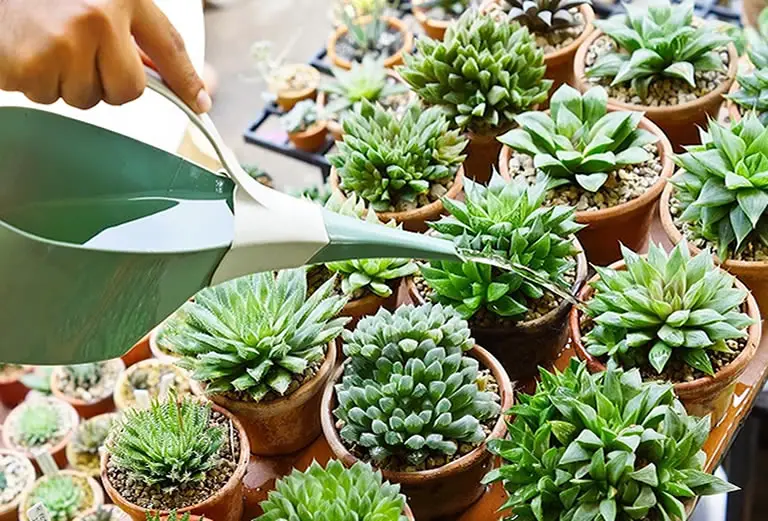Table of Contents
- The Unique Watering Needs of Succulents
- Determining the Right Frequency for Your Succulents
- Top-Down vs. Bottom-Up Watering: Pros and Cons
- Recognizing the Telltale Signs of Dehydration in Succulents
- Adapting Watering Strategies to Different Environments
- Summer Hydration: Tips for Hotter Months
- Creating a Succulent Watering Schedule Calendar
- Dealing with Pests and Diseases Related to Overwatering
The Unique Watering Needs of Succulents
Diving into Succulent Hydration: A Comprehensive Approach Embark on a journey to master succulent watering basics—a comprehensive guide to nurturing these resilient wonders. Unlock the secrets of their unique hydration needs, exploring why succulents demand a distinctive approach.
This guide delves into the fundamentals, ensuring you become a succulent whisperer capable of providing precise care tailored to the individual needs of your leafy companions.
The Unique Watering Needs of Succulents
Succulents, adapted to arid landscapes, can go long periods without watering and thrive in well-draining soil that mimics their natural habitat.
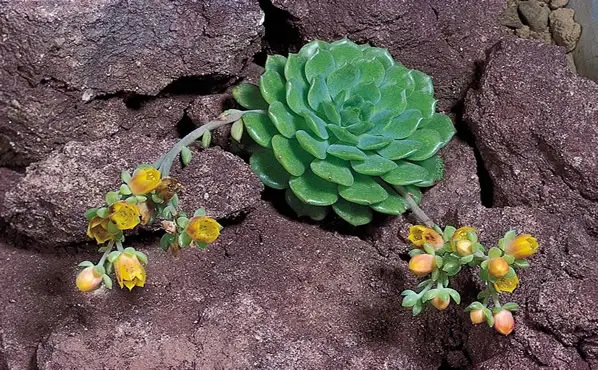
This article unveils the intricacies of their water storage strategy, guiding you to strike the perfect balance between hydration and drought.
Mastering the unique watering needs of succulents ensures their health and vibrancy under your attentive care.
Why Succulents Thrive in Well-Draining Soil
Discover the key to succulent vitality—well-draining soil.
Mimic arid conditions by choosing a mix that allows excess water to escape, preventing root rot.
Cactus soil’s porous nature ensures your succulents receive the hydration they need without drowning, promoting healthy growth and resilience.
When and How Much: Succulent Watering Schedule Demystified
Unlike traditional plants, succulents flourish with less frequent watering.
Strike the perfect balance, letting the soil dry between waterings to prevent overwatering.
Tailor your schedule to the unique needs of each succulent variety, transforming your care routine into a symphony of hydration for a thriving sanctuary.
Determining the Right Frequency for Your Succulents
You really need to tailor your watering schedule by determining the specific needs of each succulent.
Strike the right balance between underwatering and overwatering by allowing the soil to dry out before the plant gets its next sip.
This rhythmic approach ensures optimal growth and vitality for your succulent companions.
Measuring the Perfect Amount of Water for Succulents
Ditch the one-size-fits-all approach and tailor your watering routine to the unique requirements of each succulent species.
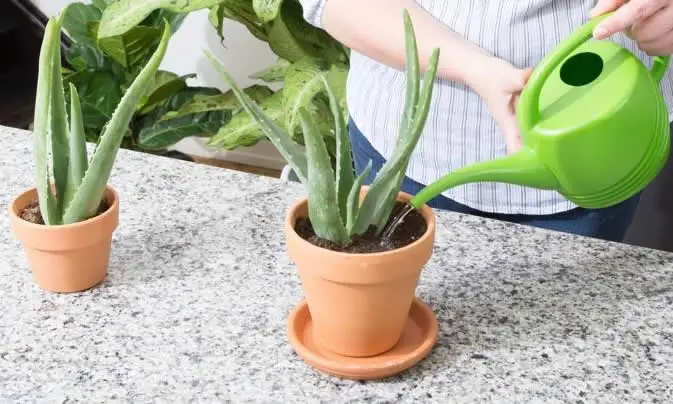
As a rule-of-thumb ensure thorough hydration without waterlogging, fostering a thriving environment where succulents not only survive but flourish.
Choosing the Right Watering Method for Succulents
Here we will explore the pros and cons of top-down vs. bottom-up watering. The first mimics rainfall while the second mimics a luxurious soak.
In most cases you will need to tailor your approach to your specific plant type but here is some information to help you make the up-down or bottom-up choice.
Top-Down vs. Bottom-Up Watering: Pros and Cons
Picture top-down as a refreshing rainfall, hydrating your succulents from above.
Alternatively, bottom-up is a luxurious soak, allowing roots to indulge.
If you are in doubt as to whether your particular succulent prefers a top down or bottom up approach always opt for the bottom up! Some succulents react very badly to having their leaves soaked.
Better still, search this website for your particular plant’s watering needs!
Avoiding Common Pitfalls in Succulent Watering Techniques
Navigate the potential pitfalls of succulent watering with expert guidance. Learn to identify and sidestep common mistakes, from overwatering to neglect.
Embrace a proactive approach by understanding your succulents’ signals and creating a watering routine that aligns with their natural tendencies.
Protect your succulents from stress and promote a thriving environment with informed watering techniques.
Each succulent type is different and will require different watering schedules. Just remember than if in doubt – water your succulent from the bottom and only water when the soil is dry.
Signs of Underwatering and Overwatering: A Visual Guide
Overwatering and underwatering tend to have very similar symptoms.
Recognize the subtleties in your succulents’ appearance, from wilting leaves to crispy edges.
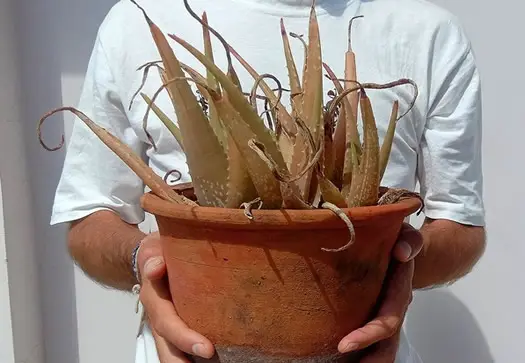
Read our articles on root rot and you will be able to prevent dehydration while also being able to address overwatering issues.
Recognizing the Telltale Signs of Dehydration in Succulents
Succulents communicate distress through visual cues, and recognizing signs of dehydration is key to proactive care.
If your succulent’s once-plump leaves appear shriveled or the vibrant colors dull, it’s time to take action.
Soft or mushy leaves indicate overwatering, adding another layer to the detective work.
The secret is finding the sweet spot between hydration and drought, adjusting your watering routine accordingly.
A mindful eye and timely intervention ensure your succulents maintain their resilience and visual charm.
Preventing Root Rot: Identifying and Addressing Overwatering
Root rot is a nemesis for succulent enthusiasts, often stemming from overzealous watering. If your succulent shows signs of wilting, yellowing, or an unpleasant odor, the roots might be drowning.
Pull back on watering and reassess your soil’s drainage capacity.
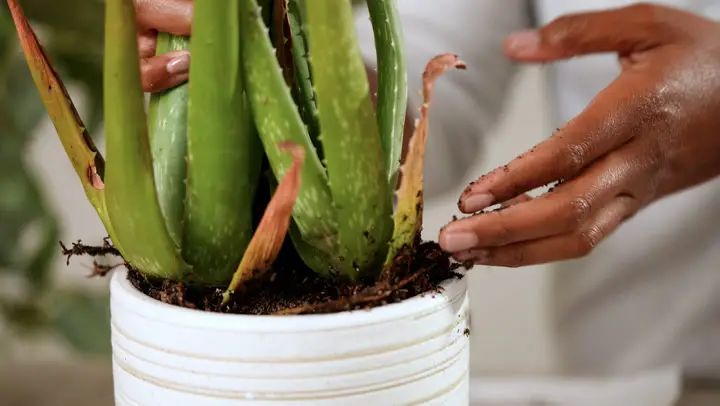
Trim affected roots and repot if necessary, giving your succulent a fresh start.
Prevention is the best cure—prioritize well-draining soil, suitable containers, and a watering routine that respects your succulent’s natural inclinations.
Best Practices for Watering Indoor vs. Outdoor Succulents
Indoor and outdoor succulents have distinct needs, and mastering the best practices for each ensures optimal growth.
Indoors, provide bright, indirect light, and tailor watering to your succulents’ natural rhythms.
Outdoors, consider the environmental factors—sun exposure, temperature, and soil composition.
Adjust your watering routine to accommodate these variables, maintaining a delicate balance between moisture and aridity.
With attentive care, both your indoor and outdoor succulents will flourish, showcasing their unique beauty in their respective environments.
Adapting Watering Strategies to Different Environments
Succulents are versatile, thriving in various environments.
Whether indoors or outdoors, adapting your watering strategy is paramount. Indoor succulents benefit from consistent light and controlled conditions, demanding a precise, less frequent watering routine.
Outdoor succulents, exposed to the elements, require a more flexible approach.
Tailor your watering to environmental factors like sunlight, temperature, and soil composition.
By understanding the unique demands of each setting, you empower your succulents to flourish, adapting seamlessly to their chosen habitat.
Balancing Light and Water for Healthy Succulent Growth
The delicate dance between light and water is crucial for succulent health.
Place your succulents strategically, providing bright, indirect light for optimal growth. Too much sunlight can lead to sunburn, while insufficient light hampers photosynthesis.
This delicate balance extends to watering—intensity and frequency should align with light exposure.
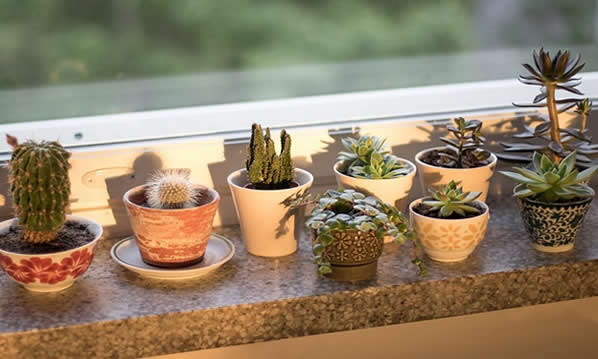
Keep a watchful eye on your succulents, adjusting both light and water to foster a harmonious relationship.
By mastering this balance, you cultivate a thriving succulent haven, where the interplay of light and water enhances their vitality.
Seasonal Adjustments: Succulent Watering in Summer vs. Winter
As seasons change, so do the needs of your succulents.
In summer, when temperatures soar, adjust your watering routine to counter the heat. Hydrate your succulents more frequently but avoid overwatering.
In winter, succulents undergo dormancy, requiring less water. Reduce watering and monitor soil dryness carefully.
Seasonal adjustments ensure your succulents receive tailored care, aligning with the natural rhythms of growth and rest.
By adapting your watering habits to the seasons, you safeguard your succulents from stress, promoting year-round health and resilience.
Summer Hydration: Tips for Hotter Months
Summer brings intense heat, challenging your succulents’ hydration needs.
Boost your watering frequency but beware of overwatering.
Ensure the soil has proper drainage, preventing waterlogged roots.
Morning watering is ideal, allowing excess moisture to evaporate during the day.
Shield succulents from scorching afternoon sun to reduce water loss through transpiration.
Embrace the summer shower method—simulate rain by thoroughly soaking the soil.
Provide shade during heatwaves to protect your succulents.
By mastering summer hydration, you safeguard your plants from dehydration and help them thrive in the warmer months.
Winter Dormancy: Adjusting Watering Habits for Colder Seasons
Winter triggers dormancy in succulents, altering their water requirements.
Decrease watering frequency as the plant’s growth slows.
Monitor soil moisture and allow it to dry between watering to prevent root rot.
Protect succulents from frost by moving them indoors or providing cover.
Adjust your watering routine to the specific needs of each succulent variety, promoting a healthy dormant period.
By understanding winter dormancy, you ensure your succulents endure the cold season without stress, ready to revive with vigor when spring arrives.
DIY Succulent Watering Tools: Making Watering Easier
Crafting your succulent watering tools adds a personal touch to care routines.
Create a succulent watering schedule calendar, ensuring consistent hydration.
A customized watering globe offers a stylish and efficient way to deliver water directly to the soil.
Simplify your care routine with these DIY tools, enhancing precision and convenience.
Personalized tools not only make watering easier but also elevate the overall aesthetic of your succulent care.
Creating a Succulent Watering Schedule Calendar
Transform your succulent care into a well-orchestrated symphony with a customized watering schedule calendar.
Tailor it to the specific needs of each succulent variety, accounting for factors like sunlight, temperature, and soil type.
Map out a precise routine, indicating when to water and when to let the soil dry. A calendar ensures consistency and helps prevent overwatering, providing a visual roadmap for optimal succulent hydration.
By integrating this tool into your care routine, you’ll establish a harmonious balance between regularity and adaptability, promoting the health and vibrancy of your succulents.
Crafting a Customized Succulent Watering Globe
Elevate your succulent care with a touch of DIY ingenuity—crafting a customized watering globe.
This stylish and functional tool simplifies your watering routine by delivering water directly to the soil.
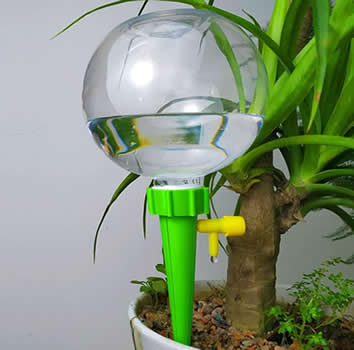
Choose materials that complement your décor and size the globe based on your succulent’s water needs.
The watering globe becomes both a practical solution and a decorative element, adding a personalized touch to your succulent haven.
Embrace the fusion of creativity and functionality as you craft a watering globe tailored to your succulents’ unique requirements. Of course you can just buy one.
Troubleshooting: Solving Common Watering Issues
Navigate the intricate world of succulent care by mastering the art of troubleshooting common watering issues.
If your succulents display signs of distress, such as wilting or discoloration, delve into the detective work.
Examine soil moisture, drainage, and light exposure to identify the root cause.
For overwatering, adjust your watering routine and enhance soil drainage.
Combat dehydration by fine-tuning your watering schedule and environment.
By troubleshooting effectively, you become a succulent detective, deciphering your plants’ signals and ensuring a thriving, resilient succulent haven.
Dealing with Pests and Diseases Related to Overwatering
Overwatering opens the door to pests and diseases that can jeopardize your succulent haven.
Stay vigilant against invaders like fungus gnats and root rot.
Ensure proper drainage, repot if necessary, and use natural remedies like neem oil to combat pests.
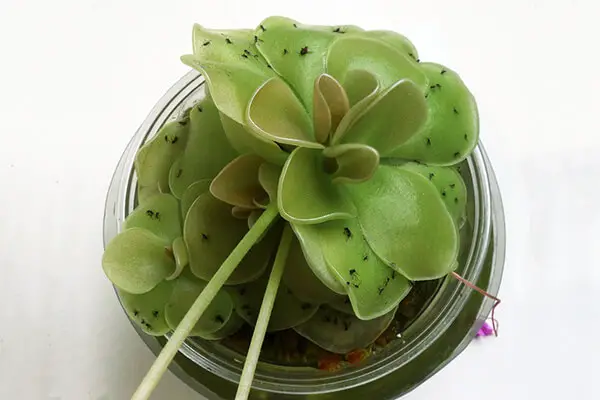
Recognize the early signs of overwatering, such as yellowing leaves and soft stems, and address the issue promptly.
Use a good pesticide.
Reviving Dehydrated Succulents: Emergency Watering Tips
When succulents show signs of dehydration, swift action is crucial.
Immerse the pot in water or use the soak-and-dry method to rehydrate the soil thoroughly.
Trim any severely dehydrated leaves and provide shade to prevent further stress.
Ensure proper drainage for future prevention.
The key is to intervene promptly, offering emergency hydration to revive your succulents.
With these watering tips in your arsenal, you become a succulent first responder, ready to restore vitality and resilience to your parched plants.
Beyond Water: Enhancing Succulent Care for Optimal Growth
Succulent care extends beyond watering—incorporate holistic practices for optimal growth.
Choose pots with proper drainage to prevent waterlogged roots (see below).
Supplemental care, including fertilizing and pruning, enhances succulent vitality.
Strike a balance between light exposure, temperature, and watering for overall well-being.
Seek expert advice from fellow plant enthusiasts, absorbing wisdom for a flourishing succulent haven.
By embracing a comprehensive approach, you elevate succulent care to an art form, ensuring your plants not only survive but thrive in an environment tailored to their unique needs.
Choosing the Right Pot for Proper Drainage
Selecting the ideal pot is a crucial step in succulent care, with proper drainage being the key to success.
Opt for pots with drainage holes, allowing excess water to escape and preventing root rot.
Choose materials like terracotta or breathable ceramics that promote airflow to the soil.
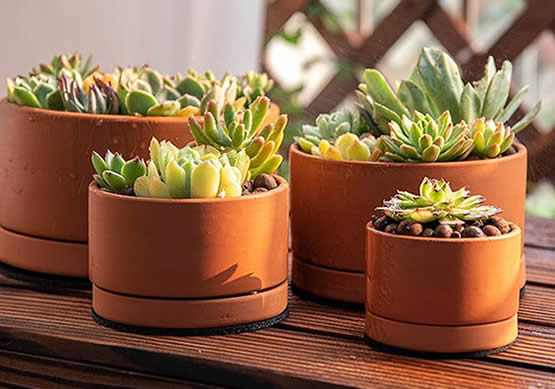
Prioritize pot size based on your succulent’s growth habits, ensuring it has enough space to thrive.
By choosing the right pot for proper drainage, you create an environment where waterlogged roots become a thing of the past, and your succulents flourish in optimal conditions.
theer are some really cool and creative succulent pots on the market – like these ones.
Supplemental Care: Fertilizing and Pruning Succulents
Elevate your succulent care routine with supplemental practices like fertilizing and pruning.
Provide nutrients through a well-balanced, diluted fertilizer during the growing season.
Avoid excessive fertilization, as succulents thrive in nutrient-poor soils.
Pruning allows you to shape and rejuvenate your plants, removing dead or overgrown parts.
Use clean, sharp tools to make precise cuts, promoting healthy growth and aesthetics.
By incorporating supplemental care into your routine, you go beyond basic watering, cultivating a thriving succulent haven where every aspect of their needs is met for optimal growth.
Be sure you search this site for the watering needs of your specific succulent as we have a variety of articles on the topic of watering different succulent types.

